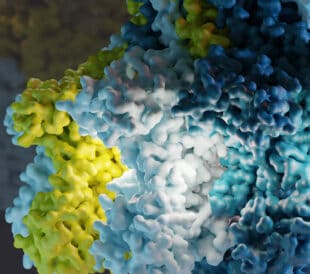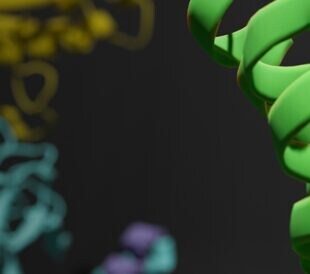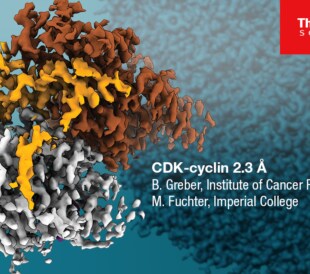Novel protein synthesis at the University of Washington’s Institute for Protein Design
A growing team at University of Washington’s Institute for Protein Design is leading the field of protein synthesis by computationally designing and creating synthetic proteins. This allows scientists to greatly expand the potential to advance our understanding of protein function.
With more than 60 scientists using negative stain electron microscopy to characterize proteins at low resolution every day, the Institute for Protein Design has an increasing desire to collectively take the next step into higher resolution structural analysis.
The team is actively seeking funding for an additional in-house cryo-electron microscope (cryo-EM) to meet their need for quality, throughput and of course, ease-of-use. Interested in one of Thermo Fisher Scientific’s most recent cryo-EM innovations—the Thermo Scientific Tundra Cryo-TEM—they decided to first put it to the test.
Contact us to schedule your own demo of the Thermo Scientific Tundra Cryo-TEM >>
In protein design, an increasing demand for cryo-EM
As the Institute for Protein Design works to create a new world of synthetic proteins, its 150+ trainees are designing thousands of new proteins each day. In some cases, negative stain electron microscopy is sufficient to verify their designs. But in other scenarios, users need the medium- to high-resolution information provided by cryo-EM.
Head of Electron Microscopy and experienced cryo-EM user Andrew Borst heard how the intuitive features of the Tundra Cryo-TEM enable users to analyze challenging proteins with unprecedented ease-of-use. To verify this claim, he brought graduate student Ryan Kibler—a novice in the world of cryo-EM—to try out the microscope at Thermo Fisher’s Oregon site using a synthetic protein sample yet to be characterized using this technique.
Quickly pinpointing areas of improvement on the Tundra Cryo-TEM
“The demo seemed like a very promising opportunity,” Borst said. “And if it panned out, it would really demonstrate the power of this instrument and this workflow to democratize the whole cryo-EM process for non-traditional structural biologists.”
According to Borst, protein design typically starts with a design on a computer, where the team works to generate models that the software algorithms believe represent what the final protein product is going to look like after ordering the genes, purifying the proteins, and characterizing them by a number of different methods. “That’s really an important part of protein design, that characterization step, knowing that what you design on a computer is actually what you get after you make it in a cell,” he said.
After Borst and Kibler were briefed on the Tundra Cryo-TEM, Kibler loaded the sample with minimal guidance, and the two began processing the data as it was collected, viewing it via an interpretable map.
Kibler said he was stunned by how fast they could see the detailed data necessary to pinpoint where the design required improvement. “I was really excited to see that after only about an hour of data collection, we could already make out really prominent features in our protein,” he said.
Lowering the barrier of entry for cryo-EM users at the Institute for Protein Design
What also surprised him was how easy the instrument is to use. “What was so special about the Tundra [Cryo-TEM] is that I could just do it,” Kibler said. “[The trainer] showed me once or twice how things happened, and I could just pick the buttons like he did and follow along . . . A week after we went home, I felt like I could just come back and operate the machine myself.”
Borst said the Tundra Cryo-TEM is going to help those at the Institute for Protein Design “get much more information, much faster,” while lowering the barrier to entry for novice cryo-EM users.
“The Tundra Cryo-TEM is really going to help with accessibility because what we’ve seen here is that a user who’s never before loaded a sample onto the microscope was able to do it seamlessly,” said Borst. “The amount of training required to use this instrument was very minimal.”
Contact us to schedule your own demo of the Thermo Scientific Tundra Cryo-TEM >>
//
Tara Nylese is a Market Development Manager at Thermo Fisher Scientific.





Leave a Reply